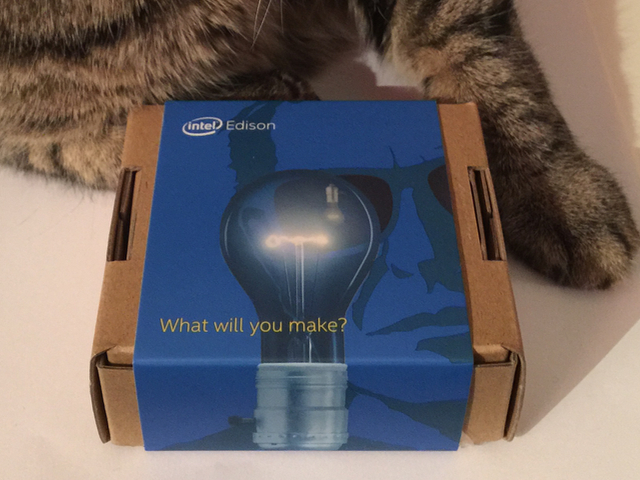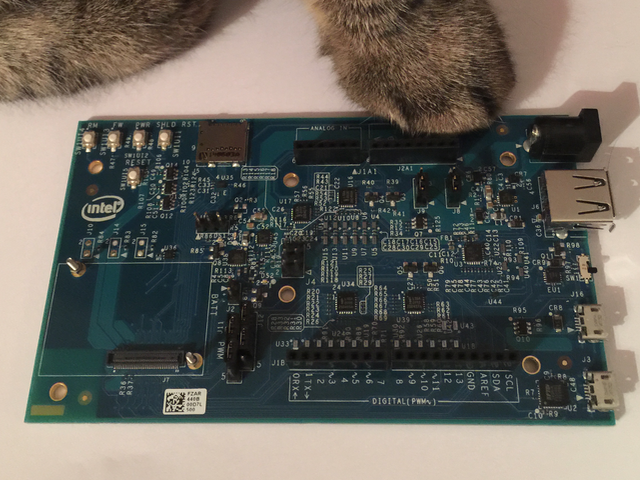Unboxing Intel Edison with Monty
I am more in the embedded devices field nowadays and after some tinkering with Raspberry Pi, I finally ordered some Intel Edison parts. The Edison is a very small computer with the main board having a size of only 35.5 x 25 x 3.9 mm. Its computing power should be superior to that of a Raspberry Pi, but more to that later. My Edison arrived in a small, beautiful cardboard box:

To give you an indication of the Edison’s size, here it is compared with a cat’s paw:

You can see how small it is. All the 70 connection pins are hidden on the back side. I also ordered a mini breakout board as well as an Arduino breakout board. This is more or less required as the Edison is that small that you probably don’t have a chance to connect anything to it unless you have your own printed circuit board ready.
Both breakout boards are made by Intel and the mini breakout board is not much bigger than the Edison itself:

You can see the 70-pin connector in the lower front of the board as well as two micro USB ports at the right side of the board. All 70 pins are available for soldering, and that’s about it.
The Arduino breakout board is considerably bigger than the mini breakout board, with the Edison going to the bottom left part of the board:

This one is mighty and not only has a power supply jack, three USB ports, proper connections for all hardware pins but also lots of jumpers and switches. So if you are in embedded things, the Arduino board is more your solution. If you just want to tinker around, the mini breakout board should be sufficient.
At the time of writing this, you can get an Edison in Germany for approx. 40 Euro, the mini breakout board (without attached Edison) for approx. 25 Euro and the Arduino breakout board (with attached Edison) for approx. 110 Euro. A combination of Edison and mini breakout board is also available but often more expensive than buying both parts separately.
For computer power, the Edison features a dual-core Intel Atom CPU, 1 GB RAM, 4 GB Flash storage and, best of all, on-board WiFi and Bluetooth. Especially these last two features are amazing, given the Edison’s size, and make it reasonable to compare it to the Raspberry Pi, where you have to purchase storage and wireless connectivity separately. We will see what I can make with it.